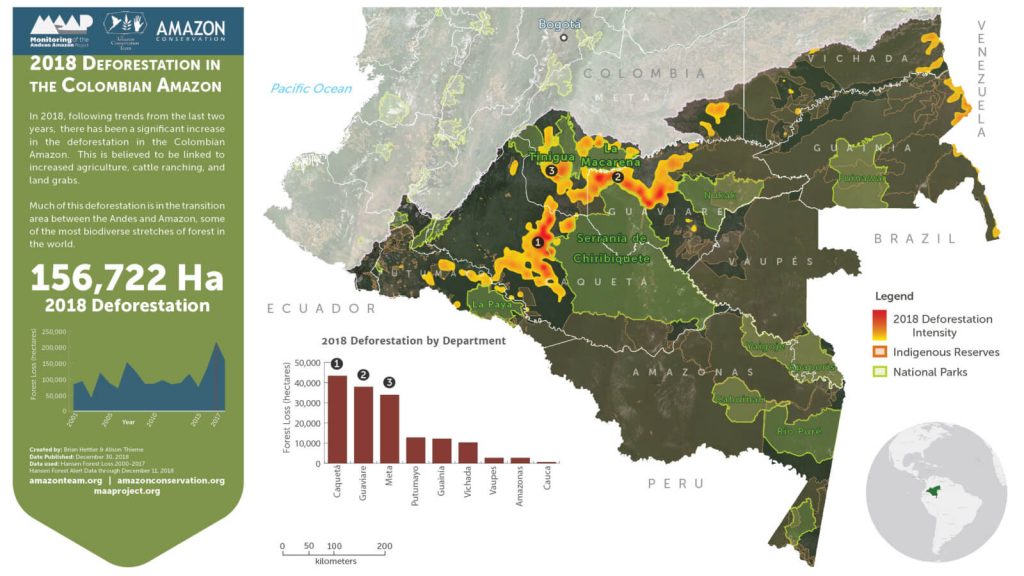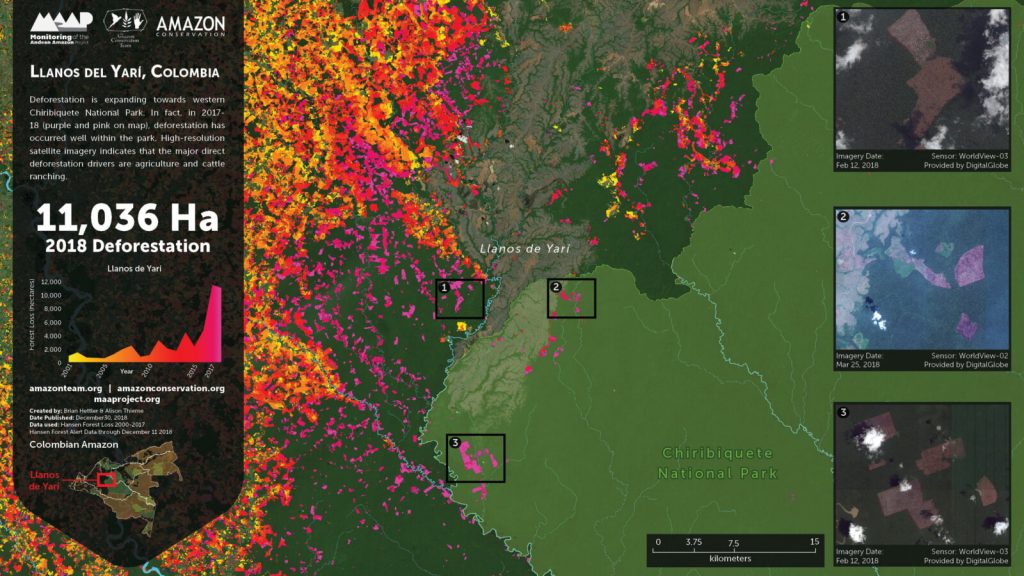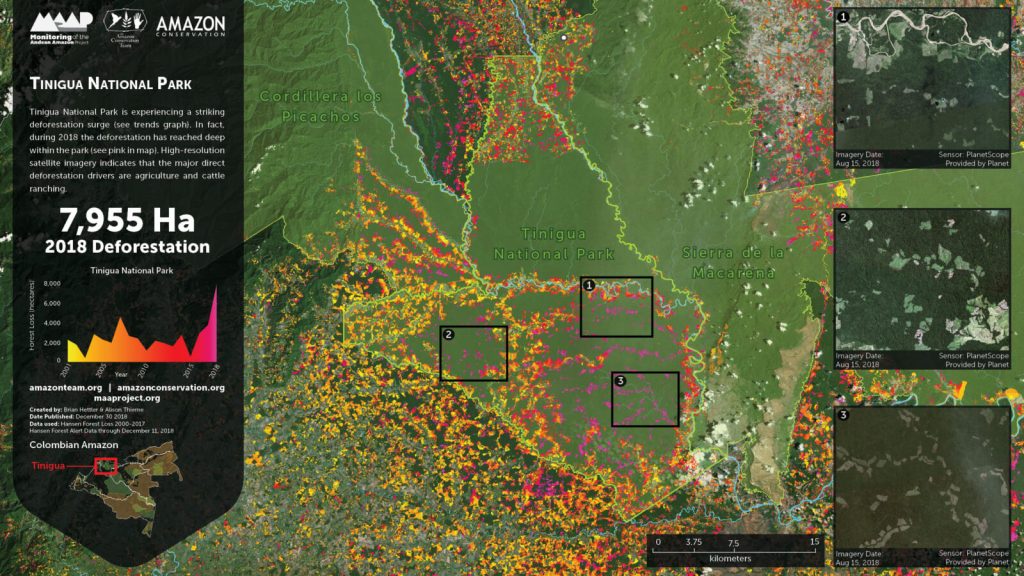The Colombian Amazon is currently experiencing a deforestation surge (see graph).
The surge started three years ago (2016) and peaked in 2017 with the highest annual deforestation on record (214,744 hectares).*
Deforestation remains high in 2018: 156,722 hectares (based on early warning alert data).* If this estimate is confirmed, it would be the second highest on record (behind just 2017).
National experts indicate that land grabbing (acaparamiento de tierras) is an increasingly dominant direct driver of deforestation.
*Data from the University of Maryland. Annual data from Hansen et al (2013) [citation below] and 2018 data from GLAD alerts.
MAAP Colombia is a collaboration between Amazon Conservation and Amazon Conservation Team., funded by the MacArthur Foundation.
We also present a Base Map that shows the 2018 deforestation hotspots. Note that the deforestation is concentrated in three departments located in the transition area between the Amazon and Andes: Guaviare, Caqueta, and Meta.
We highlight the location of three critical areas that are examined in greater detail below: 1) Llanos de Yari, 2) Chiribiquete- La Macarena, and 3) Tinigua National Park.
For the Base Map and Zooms below, please click on the image to enlarge or download.

Zoom 1: Llanos de Yari
Zoom 1 shows deforestation expanding towards western Chiribiquete National Park. In fact, in 2017-18 (purple and pink on map), deforestation has occurred well within the park.

Zoom 2: Chiribiquete – La Macarena
As we first reported in MAAP #86, the area between Chiribiquete and La Macarena National Parks is currently experiencing one of the most intense deforestation surges. Zoom 2 shows the most recent deforestation (indicated in red and pink) is entering the newly expanded section of Chiribiquete National Park.

Zoom 3: Tinigua National Park
Zoom 3 shows how 2018 has seen a surge of deforestation deep within Tinigua National Park (see pink).

References
Planet Team (2017). Planet Application Program Interface: In Space for Life on Earth. San Francisco, CA. https://api.planet.com
Hansen, M. C., P. V. Potapov, R. Moore, M. Hancher, S. A. Turubanova, A. Tyukavina, D. Thau, S. V. Stehman, S. J. Goetz, T. R. Loveland, A. Kommareddy, A. Egorov, L. Chini, C. O. Justice, and J. R. G. Townshend. 2013. “High-Resolution Global Maps of 21st-Century Forest Cover Change.” Science 342 (15 November): 850–53. Data available on-line from:http://earthenginepartners.appspot.com/science-2013-global-forest.
Citation
Hettler B, Thieme A, Finer M (2018) Deforestation Surge in the Colombian Amazon: 2018 update. MAAP: #96.


 As the world’s largest rainforest covering nine countries, the Amazon rainforest has been known as Earth’s lungs for generations. However, as a resource-rich forest, it continues to be deforested at staggering rate. To combat that, our
As the world’s largest rainforest covering nine countries, the Amazon rainforest has been known as Earth’s lungs for generations. However, as a resource-rich forest, it continues to be deforested at staggering rate. To combat that, our